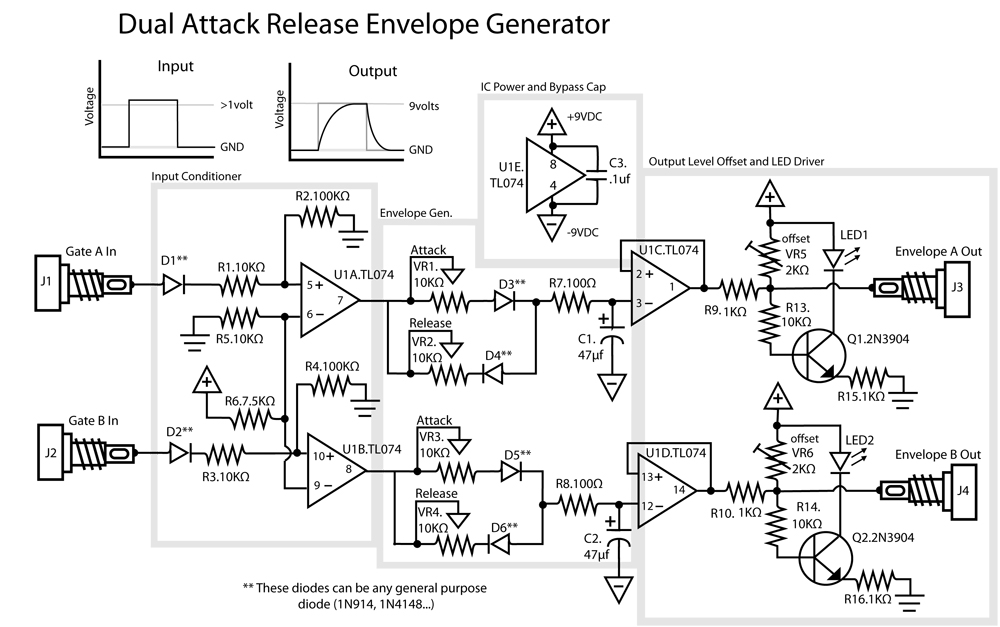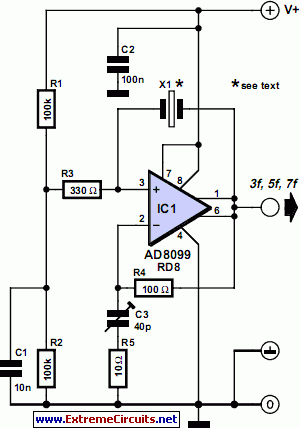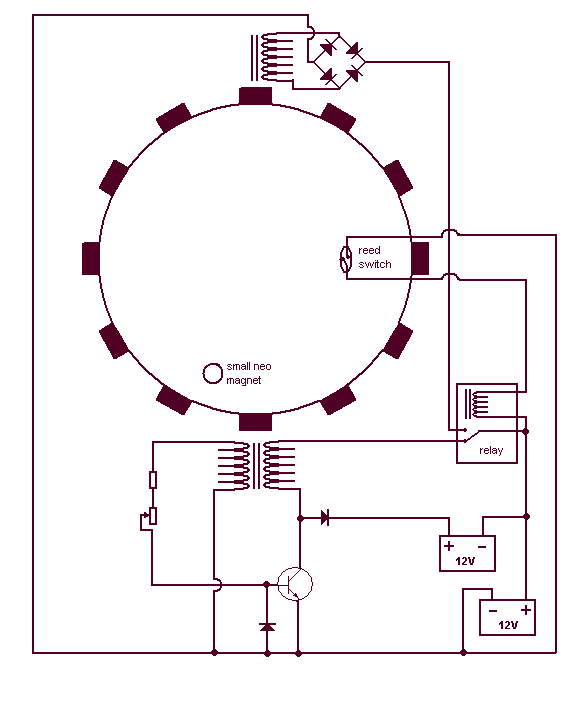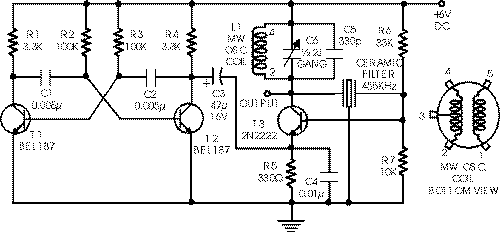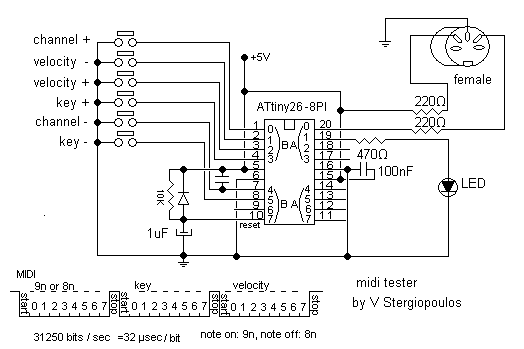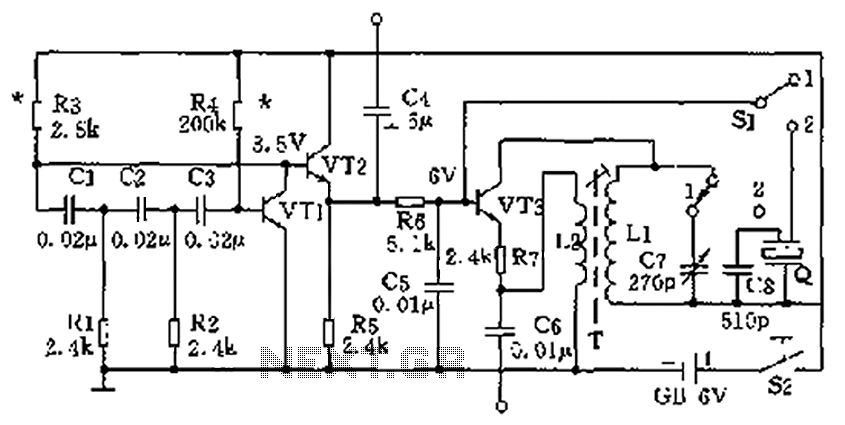
Waveform generator
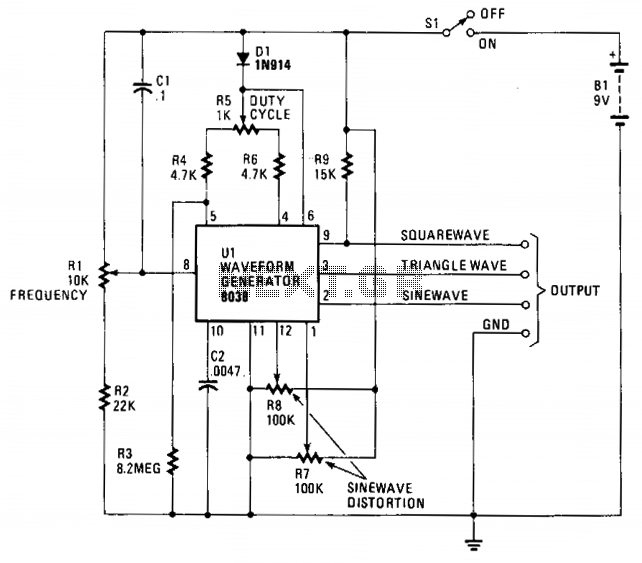
The circuit is designed around the Intersil 8038CC. The frequency range is approximately 20 Hz to 20 kHz, providing a tuning range of 1000:1 with a single control. The output frequency is determined by the value of capacitor C2 and the setting of potentiometer R1. Changing the values of C2 will alter the frequency range, with an increase in C2 resulting in a lower frequency output. The lowest possible frequency achievable is around 0.001 Hz, while the highest is approximately 300 kHz.
The Intersil 8038CC is a precision waveform generator capable of producing sine, square, triangular, and sawtooth waveforms. The circuit configuration utilizes the device's internal circuitry to achieve a wide range of frequencies with high stability and low distortion. The tuning mechanism primarily involves adjusting the capacitor C2, which, in conjunction with the resistive setting of potentiometer R1, sets the oscillation frequency.
In practical applications, the tuning range allows for significant versatility in generating audio signals or low-frequency signals for various electronic projects. The output waveform can be monitored using an oscilloscope to ensure the desired frequency and waveform shape are achieved.
To implement this circuit, it is essential to select appropriate values for C2 and R1 based on the required frequency output. For example, selecting a larger capacitance for C2 will effectively lower the oscillation frequency, while a smaller capacitance will raise it. The potentiometer R1 allows for fine-tuning within the selected frequency range, enabling precise adjustments according to specific application needs.
In summary, the Intersil 8038CC-based circuit provides a robust solution for generating a wide frequency range of waveforms, making it suitable for various electronic applications, including signal processing, audio synthesis, and experimental electronics. Proper selection and adjustment of the components involved are crucial for achieving optimal performance and desired output characteristics.The circuit is designed around the Intersil 8038CC. Frequency range is approximately 20 Hz to 20 kHz—a tuning range of 1000:1 with a single control. The output frequency depends on the value of C2 and on the setting of potentiometer Rl. Other values of C2 change the frequency range. Increase the value of C2 to lower the frequency. The lowest possible frequency is around .001 Hz and the highest is around 300 kHz.
The Intersil 8038CC is a precision waveform generator capable of producing sine, square, triangular, and sawtooth waveforms. The circuit configuration utilizes the device's internal circuitry to achieve a wide range of frequencies with high stability and low distortion. The tuning mechanism primarily involves adjusting the capacitor C2, which, in conjunction with the resistive setting of potentiometer R1, sets the oscillation frequency.
In practical applications, the tuning range allows for significant versatility in generating audio signals or low-frequency signals for various electronic projects. The output waveform can be monitored using an oscilloscope to ensure the desired frequency and waveform shape are achieved.
To implement this circuit, it is essential to select appropriate values for C2 and R1 based on the required frequency output. For example, selecting a larger capacitance for C2 will effectively lower the oscillation frequency, while a smaller capacitance will raise it. The potentiometer R1 allows for fine-tuning within the selected frequency range, enabling precise adjustments according to specific application needs.
In summary, the Intersil 8038CC-based circuit provides a robust solution for generating a wide frequency range of waveforms, making it suitable for various electronic applications, including signal processing, audio synthesis, and experimental electronics. Proper selection and adjustment of the components involved are crucial for achieving optimal performance and desired output characteristics.The circuit is designed around the Intersil 8038CC. Frequency range is approximately 20 Hz to 20 kHz—a tuning range of 1000:1 with a single control. The output frequency depends on the value of C2 and on the setting of potentiometer Rl. Other values of C2 change the frequency range. Increase the value of C2 to lower the frequency. The lowest possible frequency is around .001 Hz and the highest is around 300 kHz.
